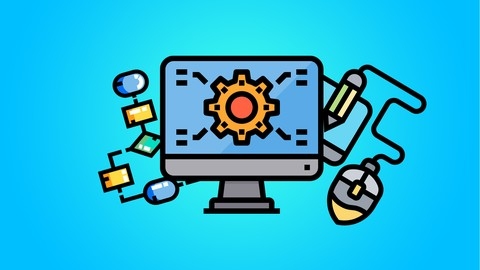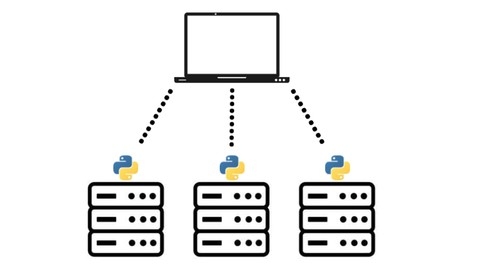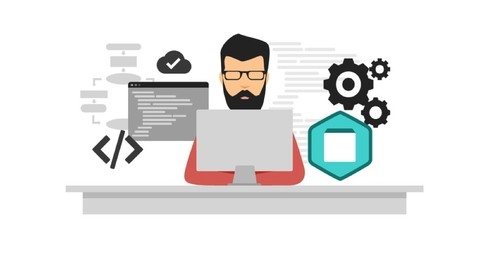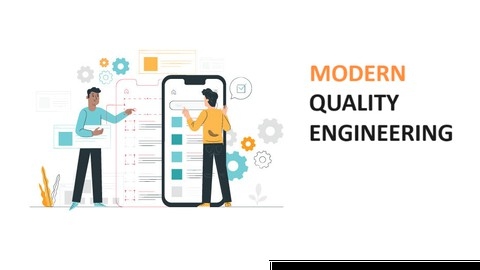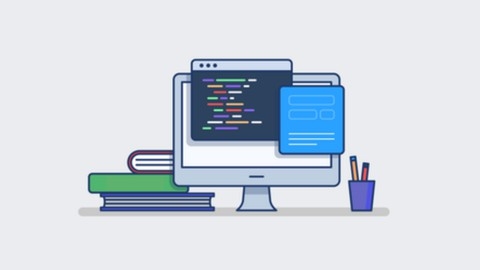Software engineering is the foundation for building robust and reliable software applications.
It involves a systematic process of planning, designing, developing, testing, and deploying software that meets specific requirements and user needs.
Mastering software engineering principles can open doors to exciting career opportunities in various industries.
Finding a high-quality software engineering course that suits your learning style and goals can be overwhelming with so many options available online.
You want a course that covers the fundamentals, provides hands-on practice, and prepares you for real-world projects.
We’ve researched and reviewed dozens of software engineering courses on Udemy, and we highly recommend Complete Software Engineering Course with Python as the best course overall.
This comprehensive program covers a wide range of topics, from Python fundamentals to software development methodologies, including building real-world projects like a weather app, a calculator, and a text-to-speech conversion software.
Whether you’re a complete beginner or have some programming experience, we have a course for you.
Keep reading to discover other excellent software engineering courses on Udemy based on your skill level, interests, and career aspirations.
Software Engineering 101: Plan and Execute Better Software.
This course teaches you how to plan and execute software projects effectively, ensuring that you deliver high-quality software that meets the requirements and expectations of your stakeholders.
You’ll start by understanding the software development lifecycle, which is the backbone of software engineering.
You’ll learn about the importance of requirements gathering and how to define the problem you’re trying to solve.
The course will then guide you through the design phase, where you’ll explore software architecture patterns, modularity, coupling, and cohesion.
Once you’ve mastered the design principles, you’ll dive into implementation and deployment.
You’ll learn about the “buy vs. build” decision and how to plan for successful deployments, including rollback strategies.
Testing is a crucial aspect of software engineering, and this course covers it in-depth.
You’ll learn about different types of testing, such as unit testing, integration testing, and black-box and white-box testing.
You’ll also understand the importance of verification and validation, and who should be responsible for testing.
The course then introduces you to various software development models, including the waterfall model, V-model, iterative model, and the unified process framework.
You’ll also learn about the agile methodology, which has become increasingly popular in recent years.
The course covers agile principles, scrum, kanban, and lean startup methodologies.
If you’re particularly interested in scrum, there’s a dedicated section that dives deeper into this framework.
You’ll learn about the roles of the product owner, scrum master, and development team, as well as the various ceremonies and artifacts involved in scrum, such as the product backlog, sprint planning, daily standups, sprint reviews, and retrospectives.
Throughout the course, you’ll gain a solid understanding of software engineering principles and best practices.
Software Performance Testing and Engineering
You’ll start with an introduction that covers the scope and importance of performance testing and engineering.
Next, you’ll dive into the fundamental concepts, learning about different types of software testing, key definitions, and the essential vocabulary a performance engineer needs to know.
This includes terms like virtual users, response time, throughput, bottlenecks, and more.
You’ll also explore how performance engineering fits into the software development life cycle.
The course then guides you through the performance testing life cycle, covering crucial phases like test planning, preparation, design, execution, analysis, tuning, and closure.
This systematic approach ensures you understand the end-to-end process.
A significant portion of the course is dedicated to hands-on learning with JMeter, a popular open-source tool for performance testing.
You’ll learn how to install JMeter and custom plugins on Windows, and then dive into scripting REST APIs using JMeter.
This includes techniques like using Beanshell for advanced scripting.
With a solid foundation in place, you’ll explore performance testing for microservices, a modern architectural style for building web applications.
You’ll learn the key concepts and best practices for testing microservices effectively.
The course includes a comprehensive project where you’ll perform performance testing on microservices hosted on AWS ECS (Elastic Container Service).
This hands-on experience covers creating an ECS cluster, conducting scalability tests, analyzing results, designing soak/endurance tests, and configuring auto-scaling alarms at both the service and cluster levels.
Additionally, you’ll learn about performance testing for AWS Lambda, a serverless computing service.
This includes an introduction to Lambda concepts, a lab exercise, and case studies on batch file processing and using Lambda as a Kinesis consumer.
Throughout the course, you’ll gain exposure to real-world scenarios and best practices, ensuring you’re well-prepared for performance testing and engineering challenges in the industry.
Requirements Engineering: Software Engineering
This course starts by introducing software engineering and explaining why it’s important to learn.
You’ll cover the basics like what software engineering is and its key concepts.
The course then dives into requirements engineering, teaching you how to define software requirements, the different types like functional, non-functional, product, and process requirements, as well as quantifiable attributes.
You’ll learn about requirements processes, actors involved, process support, quality, and improvement.
A major part focuses on requirements elicitation techniques like brainstorming, interviews, workshops, focus groups, prototyping, personas, scenarios, use cases, surveys, and more.
The course guides you on analyzing requirements through classification, negotiation, formal analysis, and deriving new requirements.
You’ll model requirements using data flow diagrams, class diagrams, activity diagrams, and state diagrams.
Creating requirements documentation is covered in depth, including simplified docs, the system requirements specification (SysRS), and best practices.
Validating requirements through reviews, prototyping, modeling, and acceptance tests is another key topic.
Requirements management practices like change management, change control, status tracking, version control, and traceability matrices are explained.
The course even discusses requirements tools for brainstorming, prototyping, modeling, collaboration, business needs assessment, data analysis, and dedicated requirements management tools.
Complete Software Engineering Course with Python
The course starts with an introduction to software engineering concepts like different software types, interpreters, and compilers.
It then dives into Python basics - installing Python, using an IDE like PyCharm, and learning about variables and data types.
You’ll quickly move to writing actual Python programs, covering data structures like lists, sets, dictionaries, and tuples.
The course also teaches you control structures like if statements and loops.
Along the way, you’ll reinforce your learning through quizzes and exercises.
As you progress, you’ll learn more advanced Python concepts like functions, modules, file handling, and working with dates/times.
You’ll also learn how to perform CRUD operations using MySQL.
The real-world examples include building a weather app using an API, a calculator, a guessing game, finding cricket scores, sending OTPs via Twilio SMS gateway, and more.
The course covers object-oriented programming (OOP) principles in Python, an essential concept for robust software design.
You’ll learn data visualization techniques like creating line graphs, pie charts, and bar charts.
For GUI development, you’ll use Python’s Tkinter library and the Qt Designer tool to build user interfaces, including a random password generator project.
The software development life cycle (SDLC) is also covered.
The final capstone project involves building a text-to-speech conversion software following the SDLC phases like requirements gathering, design, implementation, testing, and documentation.
Lastly, the course gives you a roadmap for further learning web development and mobile app development after mastering Python.
Python for Software Engineering Bootcamp
You’ll start by setting up your coding environment and writing your first Python program.
From there, you’ll dive into the fundamentals of Python, including variables, data types, control structures, and data structures like lists, tuples, and dictionaries.
As you progress, you’ll learn about formatting strings, writing comments, and using conditional statements like if, elif, and else.
The course will also cover loops (for and while) and functions, which are essential for writing modular and reusable code.
You’ll explore advanced concepts like classes, inheritance, decorators, and generators, enabling you to create more complex and object-oriented programs.
Moving on, you’ll delve into web development with Python, learning how to handle JSON and text responses, work with typing and response models, and build APIs using path parameters, request bodies, and query parameters.
You’ll also learn about HTTP methods like PUT and DELETE, as well as docstrings and async functions.
It covers essential software engineering practices like directory structure, API routers, environment variables, HTTP status codes, exception handling, and logging.
You’ll also learn about testing with Pytest, including writing unit tests, integration tests, and testing for exceptions.
Additionally, you’ll explore sending requests (both synchronous and asynchronous) in Python.
To facilitate your learning, the course will guide you through setting up a development environment on Digital Ocean, using SSH for remote access, and navigating the terminal.
You’ll also learn about Docker, including creating Dockerfiles, multi-stage builds, and using Docker Compose.
The course dives into SQL and relational databases, covering data types, schemas, creating and altering tables, inserting and querying data, joins, subqueries, and window functions.
You’ll then integrate databases into your Python application using SQLAlchemy ORM, handling database migrations, and performing CRUD operations (create, read, update, delete) both synchronously and asynchronously.
Caching is another important topic covered, with an introduction to Redis and its data structures like hashes and sets.
You’ll learn how to implement caching in your application, handle pagination with caching, and manage cache flushing and data compression.
To ensure code quality, the course covers linting with MyPy, import sorting, code formatting, and additional code checking tools.
You’ll also learn how to use Git and GitHub for version control, including setting up credentials, cloning repositories, creating branches, and submitting pull requests.
Finally, the course explores concurrent and parallel programming in Python, covering threads, multiprocessing, and async programming.
You’ll learn how to create threaded classes, work with queues and schedulers, and integrate workers with databases.
The course also covers multiprocessing with queues, pools, and varying arguments, as well as writing asynchronous programs using tasks, gather methods, timeouts, and async loops.
Object-Oriented Software Engineering with Java
The course starts by introducing you to OOP and its advantages over procedural programming.
You’ll learn how to create classes, objects, and constructors, as well as important concepts like encapsulation, data hiding, and the “this” keyword.
The syllabus also covers composition (has-a relationships) and the toString() method.
Next, you’ll dive into inheritance, a crucial OOP concept.
The lectures explain the is-a relationship between superclasses and subclasses, method overriding, and how inheritance promotes code reuse.
Quizzes help reinforce these ideas.
Polymorphism is another major topic covered.
You’ll understand static and dynamic binding, downcasting, abstract classes, and interfaces.
The course even touches on the Comparable and Comparator interfaces used for sorting objects.
Generic classes and methods are explored, allowing you to write reusable code that works with different data types.
Design patterns, an important software engineering concept, are also briefly introduced.
The latter part focuses on applying your knowledge through exercises on Java collections, recursion, and revision problems.
ChatGPT for Software Development: From Zero to Hero
This comprehensive program covers everything you need to know about leveraging the power of ChatGPT in your software development journey.
It kicks off by introducing you to the fundamentals of ChatGPT, including its main components and pre-training process.
You’ll set up the ChatGPT environment and practice generating text, ensuring you have a solid foundation before diving deeper.
Next, you’ll learn how to use ChatGPT to prepare for coding tests and technical interviews.
By the end of this section, you’ll have developed the skills to tackle them confidently, giving you a competitive edge in the job market.
If you’re aiming for certifications like AZ-104, this course has got you covered.
You’ll learn how to use ChatGPT to prepare for exams, increasing your chances of success.
Moving on, you’ll explore the world of Docker using ChatGPT.
You’ll learn the fundamental concepts of Docker and how to build a multi-stage Docker image, a valuable skill in today’s containerized world.
Documentation is a crucial aspect of software development, and this course teaches you how to use ChatGPT to document APIs and generate test cases for your software.
This will not only improve the quality of your code but also make it easier for others to understand and maintain.
Building projects is a hands-on experience in this course.
You’ll learn how to build an application using ChatGPT, create unit tests for your code, and even explain your code using ChatGPT’s capabilities.
Designing systems is another important aspect covered in this course.
You’ll learn how to use ChatGPT to brainstorm project design ideas and how to use OpenAPI and ChatGPT to design APIs.
Throughout the course, you’ll have access to recommended resources, ensuring you have a wealth of information at your fingertips to further enhance your learning experience.
Masterclass Software Quality Engineering | AI Testing-2024
The course starts by highlighting the importance of quality engineering and the latest trends shaping the field, like the State of DevOps and Continuous Testing reports.
It then dives into common misconceptions and issues plaguing traditional quality practices, such as over-reliance on manual testing, siloed teams, and confusing quality assurance with testing.
The modern approach advocated involves true traceability of features, trunk-based development, and redefining the quality engineer’s role.
A major focus is the “shift left” philosophy of preventive development through automation, quality policies, reusability, and test-driven development.
You’ll learn the intricacies of test automation, including the test pyramid, different test types (unit, integration, API, UI), and designing robust frameworks.
Branching strategies, continuous integration, and quality gates like linting, code coverage, and security scans are covered in depth with practical demos.
The continuous testing/delivery section explores modern environment management, deployment pipelines, nightly test runs, GitOps, performance testing, and infrastructure validations.
Test data management strategies are also discussed.
For agile teams, you’ll learn acceptance TDD, definitions of ready/done, metrics like DORA and velocity, and common anti-patterns.
The role of generative AI in accelerating QA work through test generation, data synthesis, and code comprehension is extensively covered with hands-on examples like creating a Jmeter pipeline.
Finally, lean principles like value streams, waste elimination, limiting WIP, and root cause analysis are applied to software projects.
The interplay between speed and quality, along with building high-performing teams, is also explored.
Introduction to Software Engineering and Software Design
The course begins with an introduction that provides free learning materials and platforms.
This is super helpful if you want to supplement the course content with additional resources.
You’ll dive right into the fundamentals of software engineering - what it is, why it’s needed, and the software crisis that led to its development.
The syllabus even touches on important related topics like diversity, web development, and ethics in software engineering.
To make the concepts more concrete, the course includes several real-world case studies.
You’ll explore an IPC system, an MHC-PMS, and a weather station project.
Seeing how software engineering principles apply to actual systems will deepen your understanding.
A major focus is software process models, which are frameworks for developing software.
The waterfall model, one of the earliest approaches, is covered.
But you’ll also learn modern iterative models like the incremental model and the spiral model.
You can expect in-depth coverage of core software engineering concepts and processes.
Software Engineering
The course starts with an introduction to software engineering and the software development life cycle (SDLC), explaining different SDLC models like Waterfall, Iterative Waterfall, Prototype, Incremental, Spiral, and Rapid Application Development.
It then dives into factors that influence software development, such as lines of code (LOC), logical lines of code (LLOC), software size, effort estimation, and cost factors.
You’ll learn about basic, intermediate, and advanced COCOMO models for cost estimation.
Moving on, you’ll explore requirement engineering - how to write good software requirement specifications (SRS) and formal specification techniques.
Software testing is another crucial topic covered, including static vs dynamic testing, reviews, static analysis, cyclomatic complexity, black box testing, white box testing, and different levels of testing.
Software quality is emphasized, covering quality factors, assurance (SQA), and control (SQC).
You’ll learn about international standards like ISO 9001 for quality management systems and ISO 9126 for software product quality.
The course also introduces capability maturity models (CMM), Total Quality Management (TQM) principles, and Six Sigma methodologies.
Risk management, software configuration management, and the increasingly popular Agile methodology are also part of the curriculum.
Also check our posts on:
